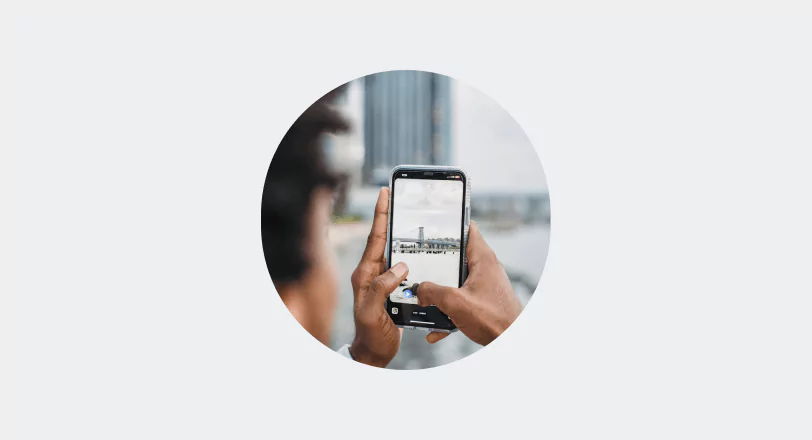As the adventure tourism sector grows rapidly, with activities like white-water rafting and skydiving expected to increase by 15.7% annually from 2025 to 2030, operators face the challenge of capitalizing on this boom effectively. The competitive landscape and high customer expectations make a strategic marketing approach essential.
This article presents ten marketing strategies tailored specifically for any adventure tour business. These methods aim to attract adventure enthusiasts and convert their interest into bookings, setting your business up for success as we head into 2025 and beyond.
Why You Need a Strong Marketing Strategy
Navigating the adventure tourism market requires more than passion; it requires a clear and effective marketing strategy.
According to the U.S. Bureau of Labor Statistics, half of all small businesses fail within five years, and two-thirds within ten years. U.S. Bank adds that 78% of these failures are due to a lack of a strong business and marketing plan.
Many operators most often try various tactics or reuse strategies from other sectors. But this often doesn’t deliver the expected results. Talk about websites that fail to attract visitors or direct mail campaigns that don’t engage potential customers. It's not working. Sounds familiar?
To address these issues, this guide focuses on specific digital marketing strategies developed for adventure tourism operators.

READ MORE FOR PRICING STRATEGIES TO ALIGN WITH MARKET DEMANDS: What is Demand Based-Based Pricing for Tours and Activities?
10 Unique Marketing Strategies for Your Adventure Tour Company
1. User-Generated Content
Harness the power of user-generated content (UGC) to enhance your brand’s visibility and credibility in adventure tourism.
1. Create a Hashtag Campaign: Develop unique hashtags for your tours and encourage guests to use them when sharing their experiences online. This will help increase your brand’s discoverability.
2. Promote Sharing: Set up branded photo spots on your tours to encourage guests to take and share photos. Make sure to provide instructions for tagging your brand.
3. Feature UGC: Regularly showcase guest content on your social media and website. This authentic display reinforces the quality of your experiences.
4. Engage with Content Creators: Actively comment on and share guest posts to foster community and encourage further participation.
5. Host Contests and Rewards: Run monthly contests where guests can win discounts or exclusive offers by submitting their best photos, voted on by your followers.
6. Leverage Reviews: Encourage guests to review their experiences on platforms like TripAdvisor and Google, and highlight these positive reviews in your marketing.
Why This Works: User-generated content (UGC) offers authentic social proof that boosts trust and credibility. It extends your reach organically, fosters community, and enhances engagement, significantly influencing potential customers’ booking decisions.
2. Influencer Collaborations
Collaborate with influencers to tap directly into their follower bases and gain credibility.
1. Identify Influencers: Choose influencers who actively engage in adventure activities and whose audience aligns with your target demographic.
2. Sponsor Trips: Offer free or discounted trips to influencers in exchange for detailed coverage of their experience on their channels.
3. Content Requirements: Define the type and frequency of content you expect, ensuring it showcases the best aspects of your tours.
4. Engage with the Content: Actively engage with the content posted by influencers to maximize its reach and encourage interaction from both your and the influencer’s followers.
5. Measure Impact: Use tracking links and promo codes to measure the bookings generated from the influencer’s content to gauge ROI.
Why This Works: Influencers have built-in trust with their audience, which can significantly lower the barrier to booking for potential customers who see your tours through a trusted source. This direct endorsement translates into credibility and expanded reach.

3. Interactive Content
Create immersive experiences that pre-sell your tours.
1. Virtual Tours: Implement 360-degree videos and AR experiences that allow potential customers to experience activities virtually.
2. Interactive Maps: Use interactive maps that show where each activity takes place, with clickable features that provide more information or fun facts.
3. Web Integration: Embed these interactive elements on your website to enhance user engagement and extend session times, which can boost SEO rankings.
4. Social Media Teasers: Share snippets of interactive content on social media to drive traffic to full experiences hosted on your website.
Why This Works: Interactive content like VR and 360-degree videos can dramatically enhance customer engagement by providing a tangible sense of what to expect on the tour. It helps in breaking down reservations customers might have about the intensity or safety of the activities.
4. Targeted Ad Campaigns
Optimize your ad spend with targeted advertising.
1. Define Your Audience: Use customer data to create detailed personas. Tailor your ad content to speak directly to these personas based on their interests and behaviors.
2. Use Retargeting: Implement retargeting ads to capture interest from website visitors who didn’t book on their first visit.
3. A/B Testing: Regularly test different ads to see what resonates best with your target audience and optimize based on performance data.
4. Seasonal Campaigns: Create campaigns tailored to different times of the year, focusing on season-specific tours and special offers.
Why This Works: Targeted advertising allows you to reach potential customers based on very specific criteria, ensuring that your marketing budget is spent on leads most likely to book your tours. It’s efficient and can yield high returns on investment by focusing resources on a defined audience.
5. Content Marketing
Position your brand as the go-to expert in adventure tourism.
1. Educational Content: Create blog posts, videos, and infographics that provide valuable information about adventure tourism activities.
2. SEO Optimization: Research and use keywords that potential customers are searching for. Optimize your website content to rank higher in search engine results.
3. Guest Posting: Write articles for popular travel and tourism blogs to reach wider audiences and drive traffic back to your site.
4. Video Marketing: Develop video content that highlights the thrill and beauty of the experiences you offer, sharing these on both your website and social media.
Why This Works: Content marketing establishes your brand as a credible source of information and an authority in adventure tourism. This builds trust with potential customers, keeping them engaged with your brand until they’re ready to book.

6. Partnerships and Collaborations
Strengthen your offerings with strategic partnerships.
1. Bundle Offers: Partner with local accommodations and restaurants to create package deals, adding more value to your tours.
2. Co-Marketing: Work together with partners on marketing initiatives to split costs and expand the reach of promotional content.
3. Community Events: Participate in or sponsor local events that align with your brand to boost local visibility and network with potential partners.
Why This Works: Strategic partnerships can extend your marketing reach and enhance the value of your offerings. Collaborating with relevant local businesses or brands can provide bundled services that are more attractive to customers, enhancing their overall experience.
7. Email Marketing Segmentation
Increase bookings with targeted email marketing.
1. Collect Data: Use booking forms and website interactions to collect data on customer preferences and behaviors.
2. Segment Lists: Categorize your email lists based on customer data like past bookings, location, and interests.
3. Personalized Campaigns: Send personalized emails tailored to each segment with relevant offers, content, and updates.
4. Automation: Use email marketing tools to automate the sending of timely booking reminders, thank-you notes, and special offers to keep your brand top-of-mind.
Why This Works: Segmented email marketing increases the relevance of your messages, improving open rates and conversions. Personalizing communication based on the recipient’s previous interactions with your brand makes them feel valued and more likely to book again.
8. Loyalty Programs
Boost repeat business with compelling loyalty programs.
1. Point System: Introduce a points-based system where customers earn points for every booking, which can be redeemed for discounts or free tours.
2. Membership Benefits: Offer tiered membership levels with increasing benefits, including early access to new tours and exclusive member-only events.
3. Referral Rewards: Encourage customers to refer friends in exchange for rewards, expanding your customer base organically.
Why This Works: Loyalty programs incentivize repeat bookings and can transform satisfied customers into brand ambassadors. They encourage ongoing engagement and foster a community of loyal customers who are more likely to refer others to your tours.
9. Sustainability Practices
Appeal to eco-conscious travelers with sustainable practices.
1. Promote Eco-Friendly Practices: Share the specific actions your business takes to protect the environment, such as using sustainable materials or limiting group sizes to reduce impact.
2. Sustainability Certifications: Obtain and showcase sustainability certifications from recognized organizations to enhance your credibility.
3. Educational Campaigns: Educate your guests on the importance of conservation through your tours and encourage them to participate in eco-friendly practices.
Why This Works: Focusing on sustainability attracts eco-conscious travelers and can differentiate your brand in a crowded market. Demonstrating a commitment to environmental stewardship can enhance your brand’s reputation and appeal to a growing segment of travelers who prioritize sustainable practices.

10. Analytics and Feedback Loops
Make informed decisions based on analytics and feedback.
1. Implement Tracking Tools: Use tools like Google Analytics to monitor website traffic and user behavior.
2. Collect Customer Feedback: Regularly gather feedback through surveys, reviews, and direct communication to understand customer satisfaction and areas for improvement.
3. Adapt Based on Feedback: Use customer insights to refine your offerings and marketing strategies, ensuring your business evolves with your customers’ needs.
Why This Works: Regularly analyzing your business performance and gathering customer feedback allows you to adapt quickly to changing market conditions and customer needs. This responsiveness can lead to better customer experiences, improved services, and ultimately, increased bookings.
Wrapping Things Up
The strategies we’ve talked about are not just to keep up—they’re to help you lead the way in adventure tourism. As 2025 approaches, using these fresh marketing ideas is key to winning over adventure seekers everywhere.
Why not start by creating a unique hashtag for your next tour? Get your guests to share their experiences. Or, set up a loyalty program to reward your repeat customers. Taking these small steps can make a big difference right away. So look at your current marketing strategies and see where you can apply these impactful tactics.

Want to make managing your adventure tours even easier and save time? Consider trying a free demo of TicketingHub’s online booking software. It’s designed to simplify your booking process, giving you more time to focus on what you do best—creating unforgettable adventures. Start your journey toward growth and streamlined operations today by checking out how TicketingHub can work for you.
FAQ
1. What is the best marketing strategy for adventure tourism brands?
A multifaceted marketing strategy is most effective for adventure tourism brands. Combining targeted ads on Google Ads, social media campaigns across various platforms, and SEO strategies targeting specific keywords helps reach a wider audience. Engaging past customers through email campaigns with promotional offers drives customer retention and repeat business.
2. What attracts thrill seekers to adventure travel brands?
Thrill seekers are attracted to adventure travel brands that offer unique and thrilling experiences, such as zipline tours or outdoor activities in remote locations. Marketing campaigns highlighting and showcasing these exciting opportunities on social media channels and through powerful SEO tactics can draw more traffic and generate more bookings.
3. How can adventure tour operators utilize tourism marketing strategies effectively?
Adventure tour operators should focus on crafting compelling customer journeys through various marketing channels.
- Use local SEO to attract visitors
- Engage with new customers on social media profiles
- Create cost-effective targeted ads
4. How can social media boost visibility for adventure tourism businesses?
Social media platforms offer an adventure tourism brand a unique opportunity to share its thrilling world with a global audience. Regularly updating social media profiles with high-quality images and videos of adventure experiences can captivate potential customers and forge partnerships with influencers to extend reach even further in the competitive adventure tourism industry.
5. What role does SEO play in attracting more visitors to adventure tourism websites?
SEO is a powerful tool for any adventure tourism business looking to attract more visitors online. By targeting specific keywords related to adventure experiences and implementing a robust local SEO strategy, adventure businesses can improve their visibility on search engines, driving more organic traffic and securing more bookings.





